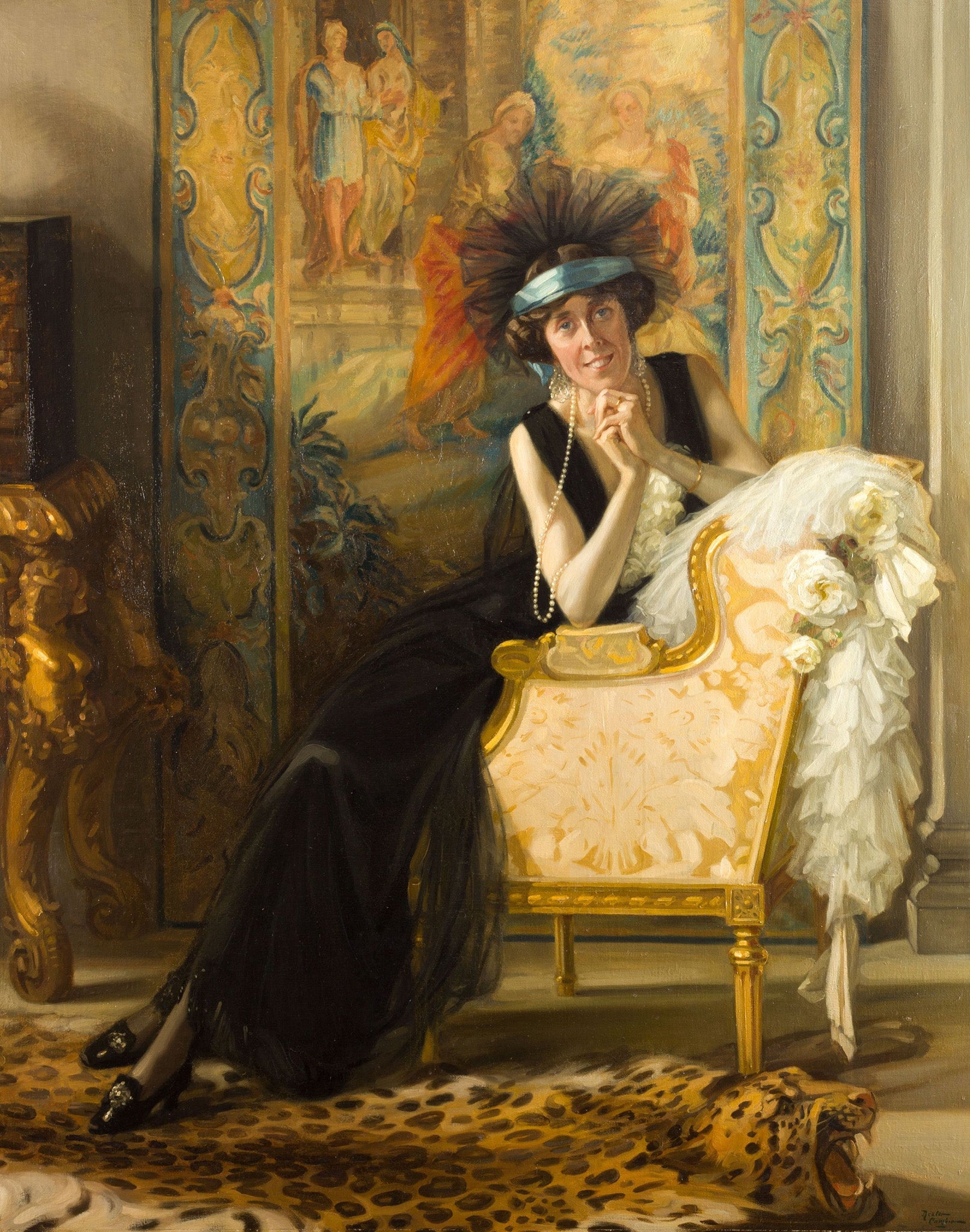Portrait of a Lady: the life and passions of Lady Barber, Barber Institute of Fine Arts, Birmingham

This is one of those good/bad exhibitions – good in so far as it tells us an interesting story about the foundation of an important institute of fine arts in Birmingham eighty years ago within the precincts of the university; bad in so far as a fair number of the works on display here – notably the paintings of Lady Barber herself - are of an indifferent quality. Not the lace and the tapestries though.
These are well worth a careful look. No, the exhibition itself is humbled a little by the excessive vanity of the institute's patron, who insisted on being painted again and again and again - as if she never looked quite brilliant looking enough for her own liking.
The title of the show evokes the fine verbal discriminations of Henry James. Lady Barber herself may have been a little more brusque and straightforward. Born with the pleasingly pungent name of Martha Onions in 1869, Dame Constance Hattie Barber married a wealthy property developer called Henry, and the two of them soon retired to Culham Court near Henley-on-Thames.
Various portraits on a grand scale of Lady Barber greet us as we enter the single gallery devoted to the exhibition. She is tricked out like a lady of high fashion, complete with ostrich feathers, voluminous gowns and picture hats.
Her looks - those gleaming, equine teeth – have just a touch of the Joyce Grenfell. Like Peggy Guggenheim, she stove painfully hard to compensate for her lack of beauty. All these portraits – there are slightly in excess of twenty of them, though, mercifully, only a selection can be seen here – were painted by a little known Belgian called Nestor Cambier.
You see why: they are rigid and crudely flamboyant. Much more worthy of prolonged consideration are her achievements as a philanthropist. In 1932, she endowed Birmingham University with the wherewithal to build a fine art deco building that should house an art collection to rival in importance those of the Wallace Collection and the Dulwich Picture Gallery.
She herself did not own the art that we see on these walls today. The masterpieces gathered here - and yes, there are a number, notably the finest Murillo on display outside Spain – were purchased by those who came after her. Visit this place. It is a jewel. Give the wilful and overbearing lady herself just a cursory glance, but thank her from the bottom of your heart all the same.
Until 24 February 2013
Join our commenting forum
Join thought-provoking conversations, follow other Independent readers and see their replies
Comments